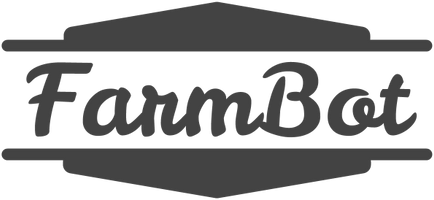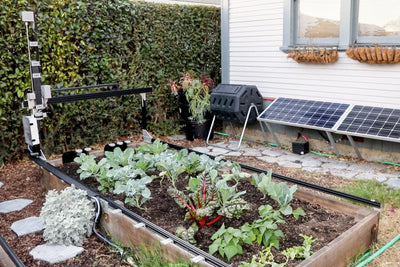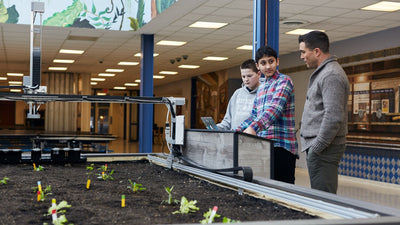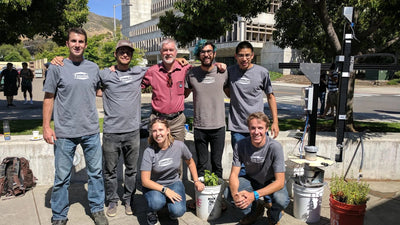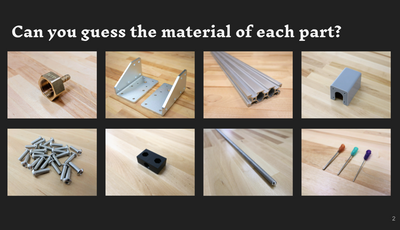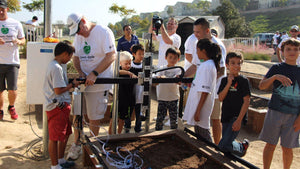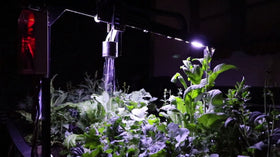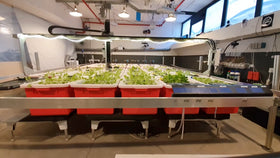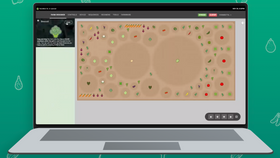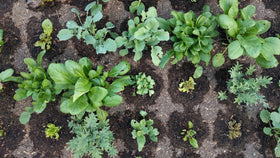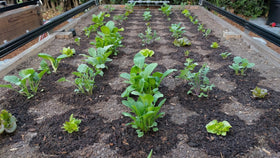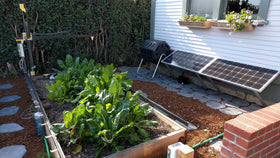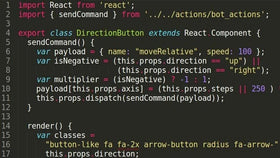Not applicable to Net 30 POs
The FarmBot Launch Campaign Wrapup
The Primary Goal
In general, every crowdfunding campaign is attempting to raise money up-front so that a project or product can be created. Usually the case is that if the money is not raised ahead of time, the project or product would not be able to be produced, or it at least wouldn't be as great or affordable as it could be. For FarmBot, we didn't have the capital available to produce a bunch of FarmBot kits to store as inventory and ship out as orders came, so we had to receive the money up-front in order for anyone to get a kit; thus, crowdfunding. The next question was figuring out how much money to shoot for. If you saw our launch campaign page, you would have seen some text like this right below the hero video: "$234,567 sold so far of our $100,000 goal". That $100,000 was our public facing goal, which admittedly was pulled out of almost thin air. Here's why: Usually a crowdfunding campaign has a minimum amount of money it must raise in order to be a viable project that moves forward. This amount is usually what sets the goal, and then the campaign is an all-or-nothing type of deal (like on Kickstarter). FarmBot though was different. If we had only received one FarmBot pre-order throughout the entire month we would have had enough money to build one kit and ship it out, and we would have done just that. So for us, setting an all-or-nothing based goal didn't make sense. So how did we come up with $100,000? We picked it because it strikes a nice balance of being both ambitious and attainable, which is critical for every crowdfunding project to do. The importance of this is best explained with some examples of what not to do. On the too-attainable end, if we had set a goal of only $5,000, it would have been easy to achieve, too easy actually. Having a goal that is too low can raise weird questions like "why are they even bothering running this campaign if they only need to sell two devices to make their goal?" or "are they going to be able to execute the project with only $5,000?". You don't want people questioning your campaign like that. On the too-ambitious end of the spectrum, imagine if we had set a goal of five million dollars. For one, we wouldn't have reached that goal - not by a long shot. And more importantly we would have raised doubt in the backer's mind, which causes hesitation. "Can they make that goal?" or "That sounds unrealistic" are exactly the type of thoughts you want to avoid. So we picked $100,000 because considering our product's price, our target market, traction going into the campaign, and the scope of FarmBot project as a whole, we felt that $100,000 struck a nice balance. And when you find the right balance, people begin to get excited about the goal because they believe it is possible to achieve and yet it is also a challenge. Furthermore, once you reach your goal, you benefit from a bandwagon type of effect where prospective backers see your success and want to be a part of it, so they back you too. Sidenote: Our internal goal was to receive 100 FarmBot pre-orders, or about $300,000 in revenue. We chose this number because we felt that 100 would be a nice number of kits to produce as our first batch in the sense that it wouldn't be overwhelming or underwhelming, but instead just the right amount of whelming. Since we ended up receiving around 300 orders, we not only had to expand our hardware team to maintain sanity, but we did so because we then had the money to afford that. 100 pre-orders we also felt would be a good starter community size. Up until launch, the FarmBot community consisted of only a dozen or so active contributors. Because we want to establish relationships with our earliest adopters, we felt that 100 individuals would be a manageable community to work with. But now we're over 300 customers, so, the more the merrier!Secondary Goals
But crowdfunding isn't just about raising money. In fact, there are many secondary goals that one can seek from crowdfunding including raising awareness, gaining press coverage, catching the eyes of investors, recruiting, building community, strengthening your following, etc. For our crowdfunding campaign we had many of these secondary goals, some which were pretty important to us. I'll touch on those here:- Raising awareness - FarmBot is a new technology, and as with all new technologies, we had some explaining to do in order to educate our prospective customers and the general public about FarmBot and its potential. That's because very few people had ever considered what a CNC farming machine could do, let alone see one in action or fully understand the potential of it. That type of general understanding is important for us to build so that FarmBot becomes "mainstream". For example, 3D printers today are pretty mainstream - most people have heard about them, seen one in action, and maybe even used/touched some 3D printed parts. When you talk about 3D printing, people understand you right off the bat without further explanation. But that wasn't the case with 3D printing five years ago. Back then 3D printing was so new and rare that most people still needed to become aware of the technology and educated on how it works and the benefits of it. That's where we started with FarmBot before our campaign. So an important secondary goal for us was to start making people aware and educated about this technology. And while they may not have purchased a device now, they are more primed to do purchase one 1, 3, 5, or 10 years down the line.
- Building our brand - FarmBot and our company are completely open-source which means that it will be very difficult if not impossible for us to maintain a competitive advantage that is rooted in intellectual property. Instead, we plan to build a strong brand that is known for quality, service, and our dedication and stewardship of the open-source core and community. It is these elements of our business that will keep us competitive. Thus, a secondary goal of our crowdfunding campaign was to start building our brand. This is a long-term goal, not a short-term one such as the money.
- Explore/validate the market - Up until our launch campaign there were very few people with FarmBots and we had not sold any devices. Aside from our guts, nothing was telling us that people would actually be willing to pay for a FarmBot. The crowdfunding campaign served as a way to explore and validate our market in a low risk fashion. We now better understand the types of people purchasing FarmBots, that those people exist at all, and what they plan on doing with their FarmBots. This knowledge will help us offer the best support we can to our community, and also guide us in where we focus our resources next.
